
Historic Charm and Cozy Cafés in Haga, Gothenburg
Discover Haga in Gothenburg: A picturesque neighborhood with cobblestone streets, historic charm, unique boutiques, and cozy cafés serving the city's best cinnamon buns.
Welcome to Haga, one of Gothenburg's oldest neighborhoods, where cobblestone streets, quaint wooden houses, and a vibrant cultural scene await you. This charming area dates back to the 17th century and has been beautifully preserved, offering a glimpse into the city's rich history while presenting a modern and inviting atmosphere. Stroll down Haga Nygata, the main pedestrian street, lined with unique boutiques, artisanal shops, and delightful cafés. The aroma of freshly baked cinnamon buns, known locally as 'kanelbullar,' wafts through the air, inviting you to take a break and savor the local flavors. Don't miss Café Husaren, famous for serving the largest cinnamon bun in town. Haga is also home to several historical landmarks and cultural attractions. Visit the Skansen Kronan, a 17th-century fortress perched on a hill, providing panoramic views of Gothenburg. Explore the Haga Church, a beautiful 19th-century structure that adds to the area's historical charm. The neighborhood's relaxed and friendly atmosphere makes it a perfect spot for a leisurely day of exploration, shopping, and dining. Whether you're a history buff, a foodie, or simply looking to soak in the local culture, Haga offers something for everyone. Its blend of old-world charm and contemporary allure makes it a must-visit destination in Gothenburg.
Local tips in Haga
- Visit on a Sunday to experience the local flea market on Haga Nygata.
- Wear comfortable shoes for walking on the cobblestone streets.
- Climb up to Skansen Kronan for stunning views of the city.
- Try the gigantic cinnamon bun at Café Husaren.
- Explore side streets for hidden gems and unique shops.
Historic Charm and Cozy Cafés in Haga, Gothenburg
Welcome to Haga, one of Gothenburg's oldest neighborhoods, where cobblestone streets, quaint wooden houses, and a vibrant cultural scene await you. This charming area dates back to the 17th century and has been beautifully preserved, offering a glimpse into the city's rich history while presenting a modern and inviting atmosphere. Stroll down Haga Nygata, the main pedestrian street, lined with unique boutiques, artisanal shops, and delightful cafés. The aroma of freshly baked cinnamon buns, known locally as 'kanelbullar,' wafts through the air, inviting you to take a break and savor the local flavors. Don't miss Café Husaren, famous for serving the largest cinnamon bun in town. Haga is also home to several historical landmarks and cultural attractions. Visit the Skansen Kronan, a 17th-century fortress perched on a hill, providing panoramic views of Gothenburg. Explore the Haga Church, a beautiful 19th-century structure that adds to the area's historical charm. The neighborhood's relaxed and friendly atmosphere makes it a perfect spot for a leisurely day of exploration, shopping, and dining. Whether you're a history buff, a foodie, or simply looking to soak in the local culture, Haga offers something for everyone. Its blend of old-world charm and contemporary allure makes it a must-visit destination in Gothenburg.
Iconic landmarks you can’t miss
Skansen Kronan
Explore Skansen Kronan, a historic fortress in Gothenburg offering stunning views, rich history, and a serene beer garden experience.

Järntorgsbrunnen
Explore the historical charm of Järntorgsbrunnen, a captivating fountain and cultural landmark in the heart of Gothenburg, Sweden.

Haga Kyrkoplan
Discover the serene beauty of Haga Kyrkoplan, a historic park in Gothenburg perfect for relaxation, picnics, and immersing in local culture.

Haga Nygata
Discover the historic charm of Haga Nygata in Gothenburg, where cobblestone streets meet vibrant culture and delightful local cuisine.

Delawaremonumentet
Explore Delawaremonumentet in Gothenburg, a poignant historical landmark commemorating the valor of African American soldiers in the American Civil War.

Hem i Haga
Explore Hem i Haga, a captivating ethnographic museum in Gothenburg showcasing Sweden's rich cultural heritage through immersive exhibits and storytelling.

Raoul Wallenberg Monument
Explore the Raoul Wallenberg Monument in Gothenburg, a heartfelt homage to a hero of humanity and a symbol of hope and courage.

Crime Walks Haga
Discover the thrilling history of Gothenburg at Crime Walks Haga, where captivating tales of crime and intrigue await in a charming setting.

Crime Walks Skanstorget
Discover the chilling tales of Gothenburg's past at Crime Walks Skanstorget—a must-visit for history enthusiasts and thrill-seekers.

Haga's History (Tord Hamming)
Explore Haga's History in Gothenburg, a captivating sculpture that showcases the artistic heritage of this vibrant Swedish city.

Unmissable attractions to see
Slottsskogen
Experience the natural beauty of Slottsskogen Park in Gothenburg, a perfect blend of relaxation, wildlife, and cultural events.

The Garden Society
Discover the lush landscapes and historic charm of The Garden Society, a serene oasis in Gothenburg perfect for nature lovers and casual strolls.

Skansen Kronan
Explore the historic Skansen Kronan fortress in Gothenburg, a breathtaking landmark with stunning views and rich Swedish heritage.

Gothenburg City Museum
Discover the rich history of Gothenburg at the City Museum, where engaging exhibits bring the past to life in an exciting way.

Haga Nygata
Explore Haga Nygata, a historic street in Gothenburg, Sweden, filled with charming cafes, unique shops, and picturesque views.

Crime Walks Skanstorget
Discover Gothenburg's fascinating crime history with Crime Walks Skanstorget, where engaging stories meet the vibrant atmosphere of the city.
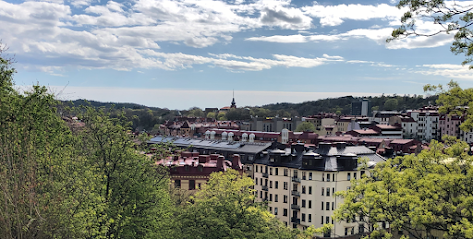
Essential places to dine
Sjöbaren Fish Seafood
Experience the best of Gothenburg's culinary scene at Sjöbaren Fish Seafood, where fresh flavors meet sustainable practices.

Bord 27
Discover authentic Swedish cuisine at Bord 27 in Gothenburg's historic Haga district, where tradition meets innovation in every dish.

En Deli Haga
Discover En Deli Haga: A delightful vegetarian restaurant in Gothenburg offering Mediterranean flavors in a cozy atmosphere.

Restaurang Solrosen
Discover delightful vegetarian cuisine at Restaurang Solrosen in Gothenburg - a culinary gem perfect for food enthusiasts.

Hemma hos
Discover Hemma hos: A cozy bistro in Gothenburg offering local flavors and unforgettable dining experiences.

Walk In The Park
Experience unique sourdough pizza and authentic Swedish flavors at Walk In The Park in Gothenburg.
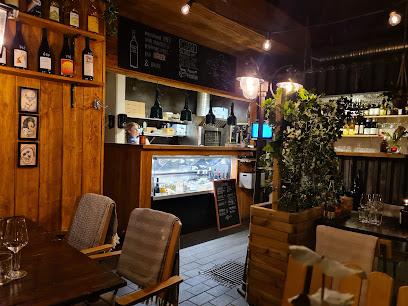
Oche Göteborg
Experience innovative Nordic cuisine at Oche Göteborg – where local flavors meet modern culinary artistry.

Napoletana Haga
Experience the heart of Italy at Napoletana Haga, where authentic Neapolitan flavors meet warm hospitality in Gothenburg.
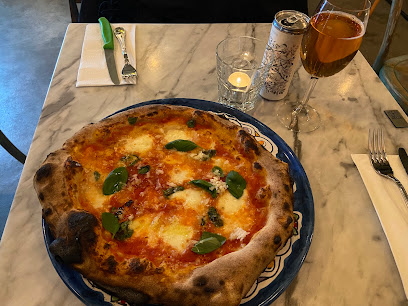
Alba restaurang & bar
Discover the vibrant flavors of Gothenburg at Alba Restaurang & Bar - where local ingredients meet innovative culinary artistry.

Hagabadet - Orangeriet
Discover culinary delights at Hagabadet - Orangeriet, where exquisite Swedish cuisine meets serene natural beauty in Gothenburg.

Markets, malls and hidden boutiques
Swedish Souvenir Haga
Explore Swedish Souvenir Haga in Gothenburg for unique crafts and authentic souvenirs that capture the spirit of Sweden.
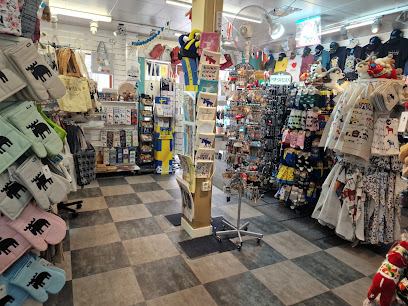
Haga of gothenburg
Discover the historic charm of Haga, Gothenburg's oldest district, filled with unique shops, delightful cafes, and stunning wooden architecture.
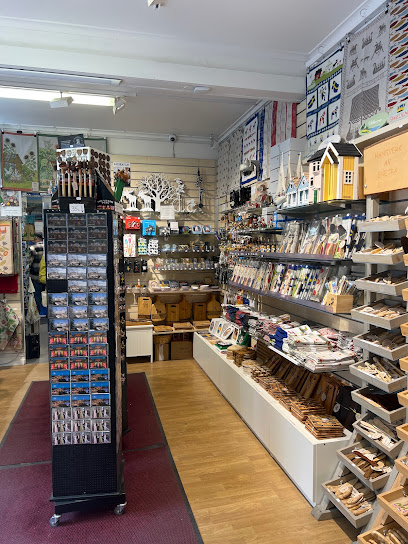
Kawaii.se (Gothenburg)
Explore the whimsical world of Kawaii.se in Gothenburg, where cuteness meets creativity in delightful gift baskets and charming souvenirs.

Tvåla & Tvaga
Explore the artisanal touch of Gothenburg at Tvåla & Tvaga, a boutique offering exquisite soaps and skincare products for every pampering need.

Tell Me More Store
Explore Tell Me More Store in Gothenburg for unique home goods, elegant chinaware, and a taste of Scandinavian design.

Butik Kubik
Explore Gothenburg's Butik Kubik for unique clothing that blends local creativity with international fashion trends.

Somenid Shop
Discover unique Swedish craftsmanship at Somenid Shop in Gothenburg, where local artisans bring their creativity to life through exquisite designs and sustainable products.

Kawaii Outlet
Explore Kawaii Outlet in Gothenburg for a delightful shopping experience filled with unique home improvement items and adorable novelties.

Haga Galanteri
Discover unique fashion at Haga Galanteri in Gothenburg's charming Haga district, where quality meets creativity in a delightful shopping experience.

Charlston fashion
Explore unique styles and exceptional service at Charlston Fashion, a chic clothing store in Gothenburg's historic Haga district.

Essential bars & hidden hideouts
Brewers Beer Bar
Discover the vibrant craft beer scene at Brewers Beer Bar in Gothenburg, where delicious pizzas and friendly vibes await!

The Bishops Arms
Experience the cozy ambiance and delightful flavors of Sweden at The Bishops Arms, a premier gastropub in Gothenburg.

Irish Embassy pub Järntorget
Discover the charm of Ireland at the Irish Embassy Pub in Gothenburg, where hearty meals and vibrant entertainment await.

Le Pub
Discover the charm of Le Pub in Gothenburg, where delectable cuisine meets a warm, inviting atmosphere in the heart of the city.

Dansken
Discover the lively spirit of Gothenburg at Dansken, where affordable drinks and a welcoming atmosphere await every visitor.
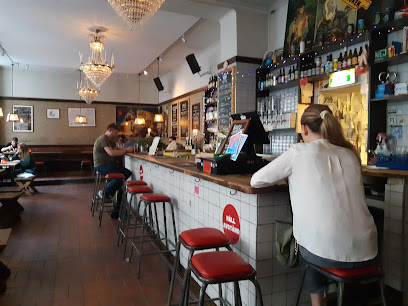
Notting Hill Pub
Discover Notting Hill Pub in Gothenburg: A cozy retreat for craft beers, hearty meals, and vibrant local culture.

Down under bar
Discover Down Under Bar in Gothenburg, a vibrant Australian-themed pub offering an exciting atmosphere, delicious food, and an extensive drink selection.
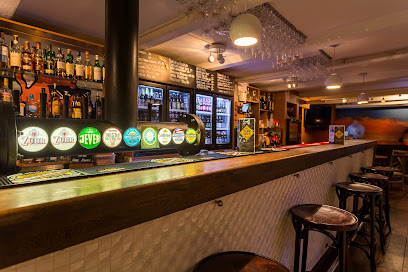
Street Life
Discover Gothenburg's nightlife at Street Life, a lively bar offering a unique blend of local drinks and vibrant atmosphere for an unforgettable experience.
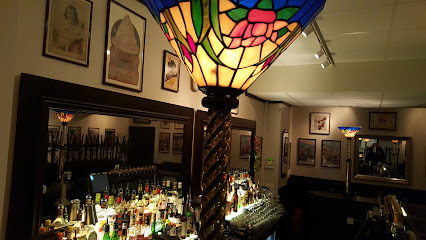
Bar Kino
Experience the unique fusion of cinema and nightlife at Bar Kino, Gothenburg's lively bar with an eclectic atmosphere and fantastic drinks.

brygg
Experience the heart of Gothenburg at Brygg, a cozy pub offering a selection of local beers and a warm, inviting atmosphere.

Local Phrases
-
- HelloHej
[hey] - GoodbyeHej då
[hey doe] - YesJa
[yah] - NoNej
[ney] - Please/You're welcomeSnälla
[snella] - Thank youTack
[tahck] - Excuse me/SorryUrsäkta
[oor-sack-tah] - How are you?Hur mår du?
[hoor mor doo] - Fine. And you?Bra. Och du?
[bra. okh doo] - Do you speak English?Talar du engelska?
[tah-lar doo eng-els-ka] - I don't understandJag förstår inte
[yag for-stor in-te]
- HelloHej
-
- I'd like to see the menu, pleaseJag skulle vilja se menyn, tack
[yag shool-le vil-ya say men-in, tahck] - I don't eat meatJag äter inte kött
[yag et-er in-te shurt] - Cheers!Skål!
[skawl] - I would like to pay, pleaseJag skulle vilja betala, tack
[yag shool-le vil-ya be-ta-la, tahck]
- I'd like to see the menu, pleaseJag skulle vilja se menyn, tack
-
- Help!Hjälp!
[yelp] - Go away!Gå bort!
[go bor-t] - Call the Police!Ring polisen!
[ring pol-i-sen] - Call a doctor!Ring en läkare!
[ring en leh-ka-re] - I'm lostJag är vilse
[yag air vil-se] - I'm illJag är sjuk
[yag air shoo-k]
- Help!Hjälp!
-
- I'd like to buy...Jag skulle vilja köpa...
[yag shool-le vil-ya shoop-a] - I'm just lookingJag tittar bara
[yag tee-tar bah-ra] - How much is it?Hur mycket kostar det?
[hoor my-ket kost-ar det] - That's too expensiveDet är för dyrt
[det air fur deert] - Can you lower the price?Kan du sänka priset?
[kan doo san-ka pre-set]
- I'd like to buy...Jag skulle vilja köpa...
-
- What time is it?Vad är klockan?
[vad air klok-an] - It's one o'clockKlockan är ett
[klok-an air et] - Half past (10)Halv (tio)
[halv (tee-oh)] - MorningMorgon
[mor-gon] - AfternoonEftermiddag
[ef-ter-meed-dag] - EveningKväll
[kvel] - YesterdayIgår
[ee-yor] - TodayIdag
[ee-dag] - TomorrowImorgon
[ee-mor-gon] - 1Ett
[et] - 2Två
[tvo] - 3Tre
[treh] - 4Fyra
[fy-rah] - 5Fem
[fem] - 6Sex
[seks] - 7Sju
[shoo] - 8Åtta
[ot-ta] - 9Nio
[nee-oh] - 10Tio
[tee-oh]
- What time is it?Vad är klockan?
-
- Where's a/the...?Var finns en/the...?
[var fins en/the] - What's the address?Vad är adressen?
[vad air ad-dres-sen] - Can you show me (on the map)?Kan du visa mig (på kartan)?
[kan doo vee-sa may (po kart-an)] - When's the next (bus)?När går nästa (buss)?
[nair gor nes-ta (boos)] - A ticket (to ....)En biljett (till ....)
[en bil-yet (teel)]
- Where's a/the...?Var finns en/the...?
History of Haga
-
Haga was founded in the early 17th century, shortly after the establishment of Gothenburg in 1621. Initially, it served as a merchant's quarter and became known for its wooden houses, which exemplified the architectural style of the time. The neighbourhood's layout reflected the ambitions of the city planners who aimed to create a bustling trade hub.
-
By the late 18th century, Haga transitioned from a merchant district to a vibrant residential area. Its location close to the city center made it an attractive place for the burgeoning middle class. The neighbourhood became known for its charming wooden houses and cobblestone streets, which still retain their historical character. This period also saw the establishment of several small businesses, cafés, and shops.
-
The 19th century brought significant changes to Haga as Gothenburg underwent rapid industrialization. Many of the original wooden houses were replaced or modified to accommodate factories and workshops. Despite this, Haga maintained its distinct cultural identity, with artisans and craftsmen contributing to the local economy and community life.
-
By the mid-20th century, Haga faced decline as industries moved out and many buildings fell into disrepair. However, in the 1970s, efforts began to preserve the historical architecture and revive the neighbourhood. Local initiatives and government support helped restore many of the wooden houses, making Haga a focus for heritage tourism and cultural events.
-
Today, Haga is celebrated as one of Gothenburg's most picturesque districts, known for its vibrant cultural scene, numerous cafés, boutiques, and markets. It hosts events such as the Haga Market and various festivals that showcase local crafts and culinary delights. Its blend of history and modernity attracts both locals and visitors, making it a vital part of Gothenburg's cultural landscape.
Haga Essentials
-
Haga is located approximately 2 kilometers from Gothenburg Central Station, making it easily accessible. You can reach Haga by taking tram line 6 or 8 from the Central Station, which will take about 10 minutes. Alternatively, buses from various parts of the city also connect to Haga, with several stops in the vicinity. If you're traveling from Liseberg Amusement Park, a pleasant walk of around 20 minutes through the city will lead you to Haga.
-
Haga is a compact neighborhood, perfect for exploring on foot. Most attractions, shops, and cafes are within walking distance. For those who prefer cycling, bike rentals are available throughout Gothenburg, and there are designated bike lanes. Public transport, including trams and buses, operates frequently, making it easy to navigate to other neighborhoods or attractions in the city.
-
Haga is generally a safe neighborhood for tourists. However, as with any urban area, it is advisable to remain vigilant, especially in crowded places. Avoid poorly lit streets at night and keep an eye on personal belongings. While there are no specific high-crime areas targeting tourists, it’s best to follow general safety precautions.
-
In case of an emergency, dial 112 for police, ambulance, or fire services. The local hospitals are well-equipped to handle medical emergencies. It’s advisable to have travel insurance that covers medical emergencies and to familiarize yourself with the location of the nearest hospital. Pharmacies are also available for minor health issues.
-
Fashion: Do dress appropriately for the weather, as it can vary greatly; layers are recommended. Religion: Do respect local customs, especially when visiting churches; cover your shoulders and knees. Public Transport: Do validate your ticket before boarding and be courteous to fellow passengers. Don’t eat or drink on trams or buses. Greetings: Do greet locals with a friendly 'Hej' (Hello). Avoid overly loud or disruptive behavior. Eating & Drinking: Do try local specialties like cinnamon buns and coffee in Haga's cafes. Don't be overly critical of local cuisine or dining customs.
-
To experience Haga like a local, visit the cozy coffee shops and bakeries, where you can enjoy a 'fika' (coffee break) with traditional Swedish pastries. Take a stroll along Haga Nygata, which is lined with charming wooden houses and unique boutiques. Don’t miss the Haga Park, a perfect spot for a picnic or relaxation. Engage with locals; they are generally friendly and willing to share stories about the neighborhood's history. For a unique experience, consider visiting on a Saturday when the flea market takes place, offering a variety of vintage goods.
Nearby Cities to Haga
-
Things To Do in Skagen
-
Things To Do in Frederikshavn
-
Things To Do in Jönköping
-
Things To Do in Aalborg
-
Things To Do in Fredrikstad
-
Things To Do in Randers
-
Things To Do in Helsingør
-
Things To Do in Hillerød
-
Things To Do in Aarhus
-
Things To Do in Viborg
-
Things To Do in Karlstad
-
Things To Do in Silkeborg
-
Things To Do in Copenhagen
-
Things To Do in Roskilde
-
Things To Do in Linköping







